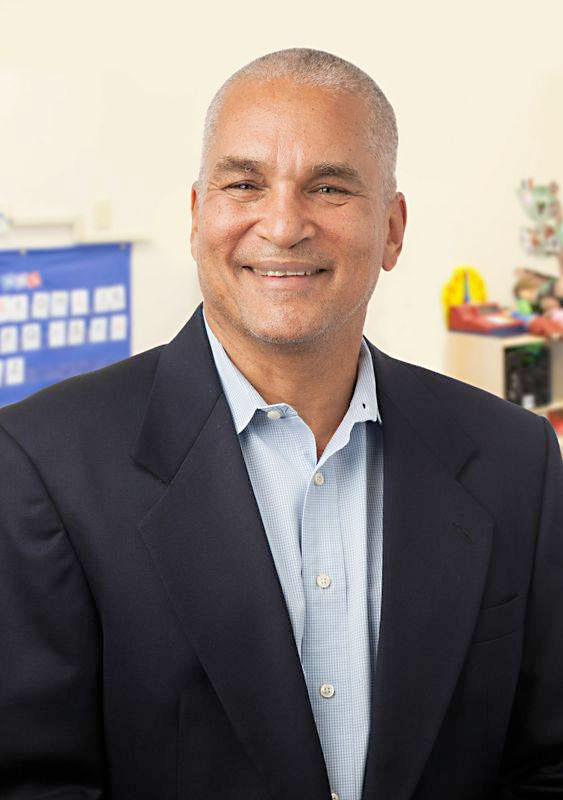A Level Playing Field
Charter schools have a distinct advantage over ISDs when it comes to building new campuses. Will City Council change that on June 9?
By Richard Whittaker, Fri., June 3, 2016
Imagine waking up one morning and finding someone is building a school right next to your house. Pretty much the first thing you heard about it is when demolition started. This may sound crazy, but it's already happened in Austin, as charter schools have taken advantage of a loophole in the city's planning rules. It's allowed them to avoid many of the standard processes with which any other builder – including the local school districts – has to comply.
The charters say they need the leeway the current rules give them, but the local school districts argue they have an unfair advantage. So far, the city is agreeing with the ISDs. On May 24, on a 7-4 vote, the Planning Commission sent an ordinance to City Council to close the loophole and revise the rules for charter construction. As scheduled, it should reach Council by June 9: If approved, it will be on the books before the next school year. Before the vote, Planning Commissioner Patricia Seeger said, "This is a land use issue. It's not a referendum on if charters are good, about their financing, about their funding, even about education. It's about land use."
The purpose of the measure is not to standardize planning requirements for all public schools, whether run by elected ISD trustees or private charter boards. Instead, as Development Services Department managing engineer Andy Linseisen told commissioners, the purpose of the ordinance is "to as closely as possible create equality with respect to all the core operating development requirements in the code."
The previous night, the AISD board of trustees approved a resolution backing the ordinance, calling for the council to adopt "amendments to the City's Land Development Code implementing land development regulations for open enrollment charter schools that are no less restrictive than development activities of the District." As Superintendent Paul Cruz told the board, "It's just about playing by the same rules."
Two Years vs. Five
The discussion about the ordinance began in 2013, when city staff first noticed that there was a massive loophole when it came to building schools. As it stands, public schools – within both ISDs and charter networks – are exempt from large chunks of the Land Development Code.
At least, that's how it is written. In reality, all eight ISDs either wholly or partially contained within Austin city limits have entered into interlocal agreements with the city, meaning that there is an extra layer of restrictions. However, while they are described as public schools, open-enrollment charters are run as private entities, and so cannot enter into an interlocal agreement. Instead, they're allowed to simply file a site plan exemption with the city, speed through the process, and be effectively exempted from many strictures placed on other structures.
The details of the exemptions mean charters have proven to be far nimbler in construction than the districts operating under interlocal agreements. Opening an AISD campus takes roughly five years from first plans to first period. A charter school generally takes less than half that, around two years, and allows construction under looser regulations and with less public engagement.
Under instructions from the Planning Commission and Council, in 2013 staff started examining the loophole. At that time, it seemed like a procedural fix, but it became a lightning rod when Austin Achieve moved into the Windsor Park neighborhood in 2014. Many residents only found out the school was moving in when construction started. Because of the site plan exemption, and the reduced requirements placed on them by charter law, Achieve crammed 600 students onto four acres. (For context, if AISD wants to build an elementary, they'd be looking at 16 acres.) AISD Facilities Executive Director Paul Turner said, "In that situation, the school was constructed right over the privacy fence of a home, and it was this huge structure overshadowing the whole neighborhood." Moreover, since there was no playing field, "they had children playing out in the street. ... [Achieve] didn't interact with the neighborhood, they just went ahead and did it."
In August 2015, closing the loophole received added impetus when the Austin Neighborhoods Council passed a resolution formally backing putting charters on a level playing field with Austin ISD. Now the matter is headed back to Council, and while there are expected to be further negotiations on the exact wording before the anticipated June 9 vote, staff told the commissioners they expected language that all sides can agree upon will be reached.
While Seeger framed this as about real estate, for local ISDs the issue isn't simply about bricks and mortar: It's about the ongoing war for student numbers. Since the Legislature passed open enrollment charter legislation in 1995, traditional public schools have faced increasingly aggressive recruitment tactics and student number predation from charters, who sometimes offer the moon with little to back it up. For example, in 2011, when IDEA Public Schools were pushing to take over the Allan Elementary campus, their claims to successfully educate underserved communities were thoroughly debunked by researchers (see "Fuller Versus IDEA," Dec. 8, 2011). That hasn't stopped the charter group from opening two Austin campuses – one on Vargas, one on Rundberg – with a third planned to open on East Slaughter this August. That's all in under three years. AISD Board Vice President Paul Saldaña said, "They don't have to comply with the compatibility standards, or even to the development standards."
AISD is well aware of the need around Rundberg/Kramer/183, having recently opened two elementary campuses (Guerrero-Thompson in 2013; Padrón in 2014) in District 3, represented by Trustee Ann Teich. However, that's not the only area that faces stiff competition from groups like IDEA that can open campuses far faster. Saldaña noted that District 1, represented by Trustee Ted Gordon, has been ground zero for charter expansion. Additionally, Saldaña fears the unproven Slaughter Lane IDEA will pull kids from nearby District 6 schools, such as the under-enrolled Williams, or over-enrolled Blazier. He said, "For anyone who's never stepped foot into Blazier, and all they've heard about is the overcrowding, they're going to see a brand-new, shiny IDEA school; they'll probably end up sending their kids to that school."
Charters Push Back
Even with the tide of public opinion seemingly against them, the charters are still making a case against the ordinance. With assistance from the Texas Charter Schools Association, several groups with an Austin footprint formed a coalition to correct what they see as misunderstandings about what the current system allows, and what the ordinance changes. Matthew Abbott, CEO of Wayside Schools, said that the term "exemption" is slightly misleading because "we have a very rigorous process for opening buildings." It still includes heights, setbacks, "all those very same things you would have to do during a site planning." In their attempt to create parity with AISD, he said the commission went too far, and the proposed excessive strictures place charters at a disadvantage. It would undoubtedly mean an increase in the time spent on getting planning approval (anything from six months to a year, rather than the current two-to-four month process) and more money (an estimated $100,000 to $200,000 extra in costs). Abbott said, "They almost want to treat us as if we're commercial businesses, as opposed to treating us like other public schools."
Abbott has suggested that one potential solution could be to get rid of the interlocal agreements and simply put ISDs on the same exemption protocol from which charters currently benefit. However, Saldaña rejected that idea, because the district wants its developments to be vetted by the neighborhoods, not inflicted upon them. When AISD issues bonds, he said, "it's taxpayer money. ... We certainly have challenges and sometimes we have issues with neighborhood plans, but we know as part of the agreement with the city that it's contingent on us doing our due diligence."
The May 24 commission vote was seen as pivotal: If the board had granted a postponement, that would have pushed back a council vote to August, giving the charters extra time to file exemptions for future sites. With the measure scheduled for council consideration on June 9, Abbott said it is unclear whether buildings in progress would be grandfathered in with their exemptions.
That change in schedule would have the most immediate impact on Wayside, which is planning a new campus in Southeast Austin. The intention is to open the school – their first purpose-built campus, rather than a retrofitted existing structure – for the 2017-18 school year. If they can no longer speed the process through with a site plan exemption, Abbott said, "We no longer believe we can open a school in time for '17-18."
The charter consortium's argument echoes the city's theme of a level playing field. However Traci Berry, senior vice president of community engagement and education for Goodwill Central Texas, said, "What [the city is] looking for in this ordinance they have to put together is what they call parity with AISD, and it doesn't do that."
AISD's Turner countered that school districts are currently working at a massive disadvantage to the charters: While the interlocal land development agreement gives them a streamlined process, such as having a dedicated review team at the city, it's still lengthy and complex. Rather than creating shortcuts, it formalizes exactly what the city wants from a public school. There are some allowances (for example, AISD can exceed the 15% impervious cover restriction in the Barton Springs recharge zone) but, Turner said, "You'll still end up working with Watershed Protection, you'll have to see how much impervious cover you have for the site, and then when you start actually designing the school you'll have to see whether the design allows you to fit the school on the site."
The multi-page interlocal agreement goes into great detail about compliance with compatibility requirements and zoning, even down to whether a Dumpster must be screened, and location of bright lights. Turner said the district often exceeds its requirements, such as when it opened the new bus terminal on Bluff Springs in 2013: Not only did it perform an additional traffic impact analysis, but worked with the Texas Department of Transportation to build access right onto I-35, without putting further pressure on the neighborhood streets. Moreover, the district has a long history of collaborative construction with the city, such as Garcia Middle School (now Gus Garcia Young Men's Leadership Academy) and Overton Elementary being built to service planned growth in Colony Park. Then, there are facilities that will benefit the neighborhood as a whole. For example, the new Guerrero-Thompson campus has a public walking trail, while Zavala and Wooten both make use of and care for adjoining public parks (Pan Am and Wooten, respectively). By contrast, Turner said, "The charters have not really been limited by any of the development rules."
Berry said the consortium isn't asking to be given special treatment, but rather "flexibility to serve the people we say we are going to serve. Right now, we are able to go in and build what we need, and the city wants to make it more complicated and more costly." Goodwill doesn't run a traditional grade school; instead, it is licensed by the state to operate the Goodwill Excel Center, offering high school diplomas and professional certification to adults. "We're the only dropout recovery school for adults up to age of 50 in the whole state of Texas," said Berry, and last session Goodwill was encouraged to expand its provision. That means extra costs, which means prioritization. She said, "We make choices to put it to education, but that also means we can't put it to somebody else."

Abbott argued that charters already start at a massive financial disadvantage. Since they do not have local property taxes to draw upon, they are dependent upon the state for their basic finances, meaning they get around $1,000-1,400 less per student per year. (However, ISDs operate under much stricter regulations – and required spending – than charters, which explains much of that per-student disparity.) Additionally, ISDs can ask for voter approval for construction bonds, and raise the interest and sinking component of property tax bills to cover their issuance: Charters have to either dip into that state cash, issue private bonds, or find a new revenue stream, such as charitable donations. Berry backed that up, saying, "When schools invest in neighborhoods, the whole place becomes a better place to live."
Not that every charter has been a boon to the neighborhood. During the May 23 AISD board meeting, in a less-than-subtle reference to Achieve, Gordon said that his district "has already been affected by the fact that some of the charter schools have been able to build without going through adhering to the kind of restrictions that AISD is holding itself to, I think with rather disastrous results."
Moreover, Saldaña noted that the Achieve property was actually zoned for single family residences: "If they had an interlocal agreement in place, they would not have been able to build that three-story building."
Even more worryingly, charters have a bad history of leaving neighborhoods, or shutting down completely. According to the Texas Education Agency, between 1996 and 2015 the state awarded a total of 318 open-enrollment charters. Out of those, 136 (43%) have closed. Within that list, 33 had their license revoked by the TEA, 43 were consolidated, 14 let their charter expire without renewing, and 46 simply returned their charter to the TEA. What happens to a charter campus once the charter shuts up shop? With Austin's robust-to-runaway real estate market, a recently renovated or constructed building that has been allowed to end-run parts of the planning process could be an extremely valuable commodity.
"This is a land use issue. It's not a referendum on if charters are good, about their financing, about their funding, even about education. It's about land use." – Planning Commissioner Patricia Seeger
For local ISDs the issue isn't simply about bricks and mortar: It's about the ongoing war for student numbers.
Got something to say on the subject? Send a letter to the editor.














